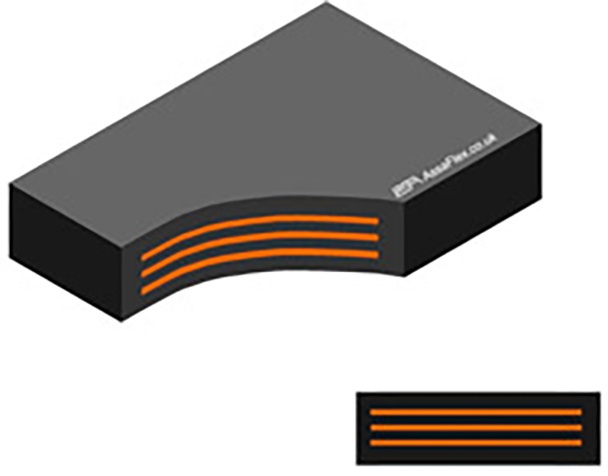Bridge Bearing Pads

Imam khomani Bridge - Esfahan-IRAN
Rubber used in the composition of bearings can be either natural or NR for “Natural Rubber” or synthetic, in which case the compound is generally a chloroprene polymer poly-chloroprene or CR for “Chloroprene Rubber”.
The minimum thickness of a sheet, in accordance with EN 1337-3,
may in no circumstance be under 5 mm, or over 25 mm.
AssaFlex Bearing Pads are designed for use in Bridges and other structures such as Buildings as a vertical load bearing component. They are manufactured from high quality materials with number of layers of steel plates depending on the type of bearings highly strong and extremely resistance to weathering, ageing with almost no influence from UV radiation and Ozone. Sheets of high strength steel are capsulated by Elastomer either NR or CR type.
AssaFlex Bearing Pads are manufactured to international standards such as European EN1337-3, British BS 5400, German DIN 4141, American AASHTO,etc
Every component is manufactured, moulded, mechanically worked and assembled by fully qualified operatives in our factory under strict ISO 9001:2008 certified quality control standards.
Technical Features:
Description
A laminated elastomeric bearing is a “block of vulcanized Elastomer (…) reinforced internally by one or several steel plates, chemically glued (bonded) during vulcanization. (…). Elastomer is a macromolecular material that regains its shape and initial dimensions approximately after being submitted to significant deformation under the influence of a low stress variation”.
- External Forces being supported
- Elastomeric bearings permit the simultaneous support of the following loads:
- Standard absorption of vertical loads
- Absorption of briefly applied external horizontal forces
- Horizontal movement in all directions through shear deformation
- Rotation of the bearing surfaces around all axes
NON-REINFORCED ELASTOMERIC BEARINGS
At AssaFlex we manufacture Non reinforcement Bearings (Type F)to your details. This type of bearings is robust and more cost effective in comparison, where a strip rubber to a specific measurement can carry compressive loads while at the same time providing transitional and rotational movement.
This type is not suitable for bridges.
TYPE F
Non reinforced or strip bearing (Not used in Civil Engineering Structure)
We produce the pads according to your design for the type of application you require.
TYPES OF BEARINGS & TRANSITION BANDS
Bearing types are determined under a certain design criteria. In the table below by using AASHO-LRFD Bridge Design Specification, we have established the transition band between the changes in the specification. This work had been carried out only for Rotations of ≤0.005 & ≤0.015. Table A1 & A2.
The resulting design will provide the geometry and other pertinent specifications for the bearing. It is likely that one or more of the preliminary selections will be eliminated in this step because of an undesirable attribute. The final selection should be the bearing system with the lowest combination of first cost and maintenance costs as indicated in Table A. If no bearing appears suitable, the selection process must be repeated with different constraints.
The most likely cause of the elimination of all possible bearing types is that a mutually exclusive set of design criteria was established. In this case the basis of the requirements should be reviewed and, if necessary, the overall system of superstructure and bearings should be re-evaluated before repeating the bearing selection process.

Bridge Bearing Pads type B
TABLE A – Summary of the most used Bearing capabilities


